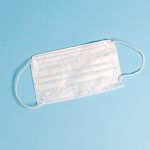The order situation is good, but supply bottlenecks make it impossible to meet customers’ needs. According to experts, 70 percent of all German companies in the manufacturing sector face this dilemma. It can take time for the situation to improve. After all, no one knows exactly how the corona pandemic will develop over the next few months.
One means of getting a grip on this problem in the long term is 3D printing. With the help of additive manufacturing, companies in many industries are becoming less dependent on sensitive supply chains. In addition, they benefit from other advantages depending on the area of application.
Here, we look at how 3D printing can help with supply shortages and the other reasons more and more companies are turning to additive manufacturing.
How the Corona pandemic gave 3D printing a boost

The Corona pandemic painfully demonstrated how dependent the German economy is on smoothly functioning global supply chains. 3D printing proved to be an early tool to mitigate the negative consequences.
At the first peak of the pandemic, for example, car manufacturers printed parts of respirators or breathing masks. In this way, medical care for patients could be maintained even though global supply chains were disrupted and the demand for medical equipment skyrocketed.
But it wasn’t just in medicine; companies in other industries successfully harnessed the potential of 3D printing to overcome the challenges of the crisis situation. Many plan to continue doing so after the crisis.
How 3D printing is used in German companies today
3D printing is trending in the German economy. A survey by industry association Bitkom found:
- One in three German industrial companies with 100 or more employees sees 3D printing as an effective means of combating supply chain disruptions.
- 44% of respondents are already using 3D printing, 20% are planning to do so in the future, and another 20% are discussing the issue of its use.
- Only 14% do not currently consider the topic relevant.
- Primarily, companies use 3D printing to produce patterns and molds, spare parts and visual models. The production of assembly fixtures and custom products are also important.
The industries in which 3D printing is used include the following, for example:
Automotive industry
Whether it’s Daimler or Volkswagen, major German automakers use 3D printing to create prototypes or produce replacement parts, for example. In addition, additive manufacturing is used for the production of tools or fixtures. In the future, it is also expected to play an important role in series production.
German Railways
Deutsche Bahn has been producing spare parts for its trains using 3D printing for some time now. In this way, the company saves raw materials and costs. Failed trains can be put back into service more quickly.
Mechanical engineering
Flexibility is becoming increasingly important for mechanical engineering companies in order to respond quickly to individual customer requirements. This development, along with supply chain disruptions, is helping 3D printing gain traction.
Medical technology
Perhaps you, too, have had the pleasure of a dental splint made using 3D printing. Because additive processes make it possible to create customized solutions comparatively inexpensively and easily, they are enjoying growing popularity in medical technology. This doesn’t just apply to breathing masks. Whether implants, hearing aids or the dental splint mentioned above, the potential of additive manufacturing for medical purposes is huge.
Tool production
For a long time, tools were mainly produced and repaired in low-wage countries to save costs. With additive manufacturing, both can be done locally in Germany. In the automotive industry, for example, tool segments produced by 3D printing are used to manufacture body parts.
More independence and flexibility, lower costs – advantages of 3D printing

Greater independence from supply chains is an important argument for the growing popularity of 3D printing.
With additive manufacturing, companies can produce urgently needed spare parts on site at short notice instead of having to transport raw materials, spare parts and workpieces first. What they need is primarily a digital file. Tools such as molds are unnecessary.
In addition, 3D printing has many other advantages in production:
- Fast production: the production of breathing masks and components for respiratory machines in the corona pandemic impressively demonstrated how fast additive manufacturing can be. Because the required components and work processes are brought together in a single step, production is less complex than with conventional methods. Functions such as cooling channels can be integrated directly into components.
- Fewer raw materials: 3D printing production generally uses only as much material as is actually needed. Unlike traditional processes, there is no waste.
- Flexibility: Products in medical technology, for example, are often very individual. Producing them in the traditional way is time-consuming and expensive. 3D printing is different. With it, customized products can be produced in such a way that they are immediately available. The same applies to customizations.
- Optimized storage: With 3D printing, you can produce many things on demand. That means you save on storage space.
- Cost savings: Outsourcing individual work processes to foreign factories for cost reasons is no longer necessary in many cases when you use additive manufacturing. This is because one person can already produce smaller quantities of spare parts. You also save on transport costs.
The trend towards 3D printing is clearly visible

3D printing was already gaining importance in the German economy before the onset of the corona pandemic. But the crisis has shown in an impressive way how strongly the dependence on global supply chains can affect the German economy.
Additive manufacturing can help reduce this dependency, whether in medical technology, the automotive industry or toolmaking. In addition, depending on the area of application, it has many other advantages, starting with cost savings. Leading companies have recognized this and are increasingly turning to 3D printing in manufacturing. Not only do they benefit from competitive advantages in a digitized world, but they are also better prepared for the next global crisis.
Contact:
Christopher Willson
Kloepfel Group
Tel.: 0211 941 984 33
Pempelforter Str. 50
40211 Duesseldorf
Mail: rendite@kloepfel-consulting.com
